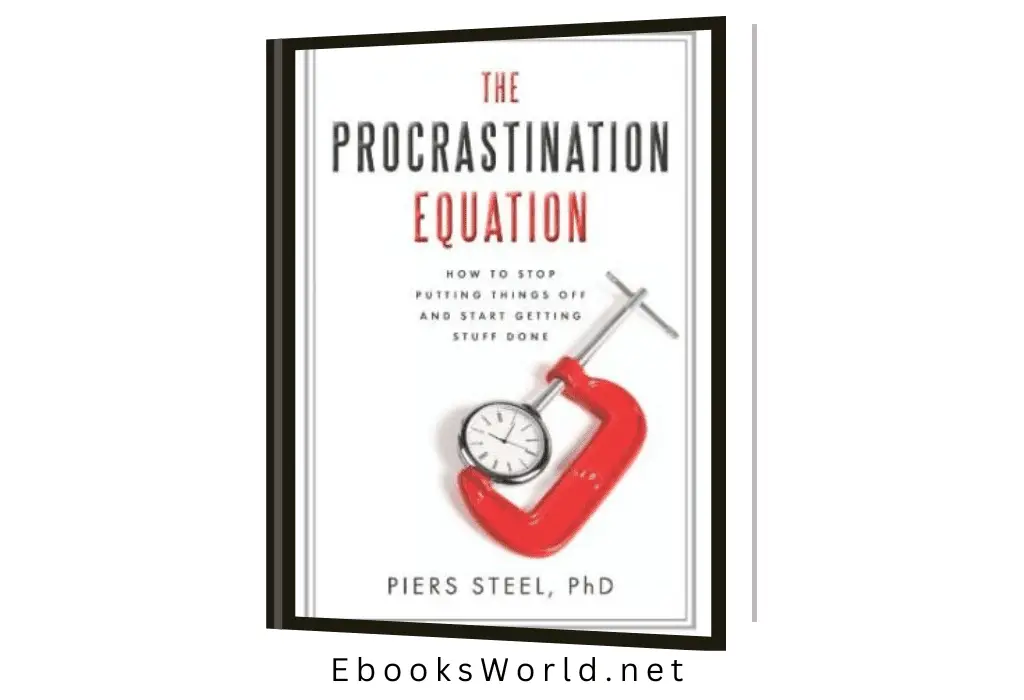The Procrastination Equation

“The Procrastination Equation: How to Stop Putting Things Off and Start Getting Stuff Done” is a book written by Piers Steel, a recognized expert on the science of motivation and procrastination. Published in 2010, the book delves into the psychological and behavioral aspects of procrastination, offering insights into why people procrastinate and providing practical strategies to overcome this common challenge.
Understanding Procrastination:
Steel begins by defining procrastination as the voluntary delay of an intended action despite expecting to be worse off for the delay. He explores the paradox of procrastination, where individuals knowingly engage in behaviors that are detrimental to their long-term goals.
The Procrastination Equation:
A central concept in the book is the Procrastination Equation, which Steel formulates as follows:
\[ \text{Motivation} = \frac{\text{Expectancy} \times \text{Value}}{\text{Impulsiveness} \times \text{Delay}} \]
Expectancy: The perceived chance of success in completing the task.
Value: The importance or reward associated with completing the task.
Impulsiveness: The individual’s susceptibility to being distracted or swayed by immediate temptations.
Delay: The amount of time before the task needs to be completed.
Steel explains how understanding and manipulating these variables can help individuals enhance their motivation and reduce procrastination.
The Four Causes of Procrastination:
1. Low Expectancy: If an individual believes they are likely to fail at a task, their motivation to start it diminishes. Building self-efficacy and breaking down tasks into more manageable parts can increase expectancy.
2. Low Value: If a task is perceived as unimportant or lacking in reward, motivation decreases. Steel suggests finding ways to increase the perceived value of tasks or connecting them to larger, meaningful goals.
3. High Impulsiveness: Procrastination is more likely when individuals are easily distracted or succumb to immediate gratification. Strategies to improve focus, such as time management techniques, are recommended.
4. Long Delay: The longer the time available to complete a task, the higher the likelihood of procrastination. Steel provides strategies for creating artificial deadlines and managing time effectively to reduce the negative impact of delay.
Temporal Discounting:
Temporal discounting refers to the tendency of individuals to undervalue future rewards in favor of more immediate gratification. Steel explores how this phenomenon contributes to procrastination and suggests ways to combat it, such as visualizing future rewards and consequences more vividly.
Personalizing Strategies:
Recognizing that individuals are unique in their motivations and triggers for procrastination, Steel provides a range of personalized strategies. These include techniques based on behavioral economics, goal-setting, and cognitive restructuring. Readers are encouraged to experiment with different approaches to find what works best for them.
Implementation Intentions:
Steel introduces the concept of implementation intentions, which involves specifying when, where, and how a task will be accomplished. This technique helps individuals create a concrete plan for completing tasks, reducing ambiguity and increasing the likelihood of follow-through.
Environmental Factors:
The book also explores how environmental factors, such as social influences and the structure of the physical environment, can impact procrastination. Strategies for modifying these external factors to support goal achievement are discussed.
Cognitive Restructuring:
Steel emphasizes the role of cognitive restructuring in changing thought patterns related to procrastination. By challenging and reframing negative thoughts, individuals can create a more positive mindset that facilitates action.
Conclusion:
“The Procrastination Equation” is a comprehensive exploration of the factors contributing to procrastination and provides a wealth of strategies for overcoming this behavior. Piers Steel combines psychological research with practical advice, making the book accessible to a broad audience. Readers are empowered to take control of their procrastination tendencies by understanding the underlying causes and implementing personalized strategies for change.







